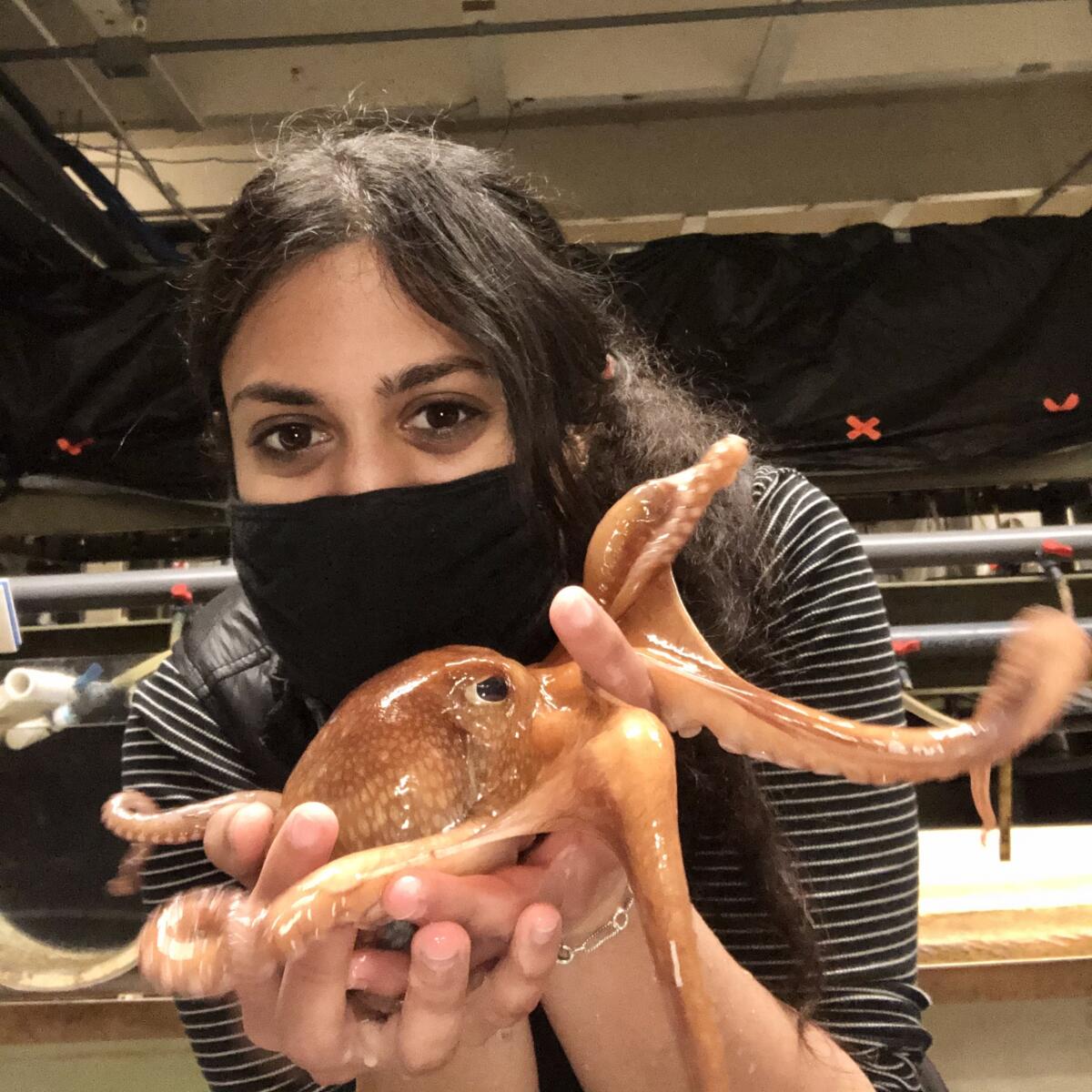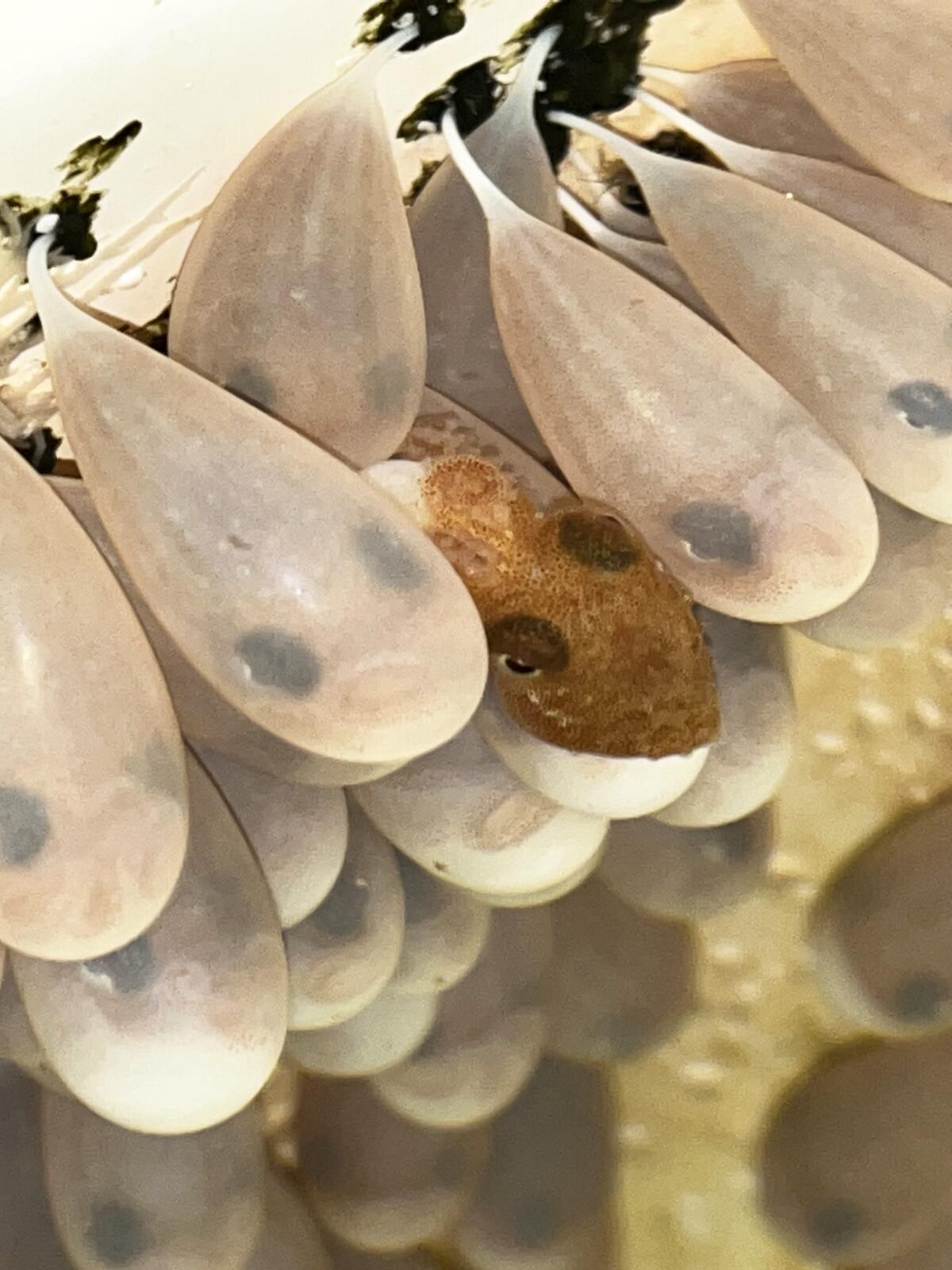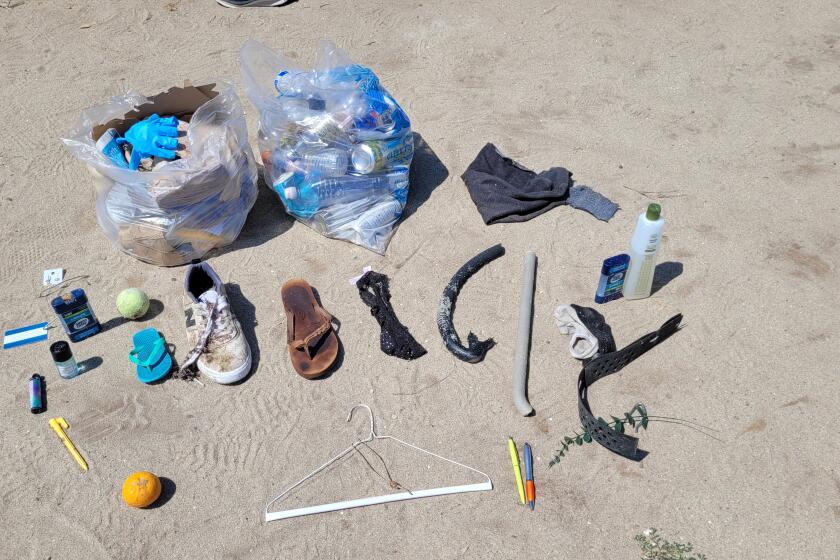Octopus rescued off La Jolla provides never-before-seen look at reproductive cycle

Scripps Oceanography researchers helped take care of a North Pacific bigeye’s eggs and learned the species’ incubation period and more about caring for it.
Though it’s common on the West Coast, little has been known about the reproductive cycle of the deep-sea North Pacific bigeye octopus — until now.
After making a chance rescue of a female bigeye last year, researchers at UC San Diego’s Scripps Institution of Oceanography in La Jolla had the opportunity to make some never-before-seen observations.
A study associated with the findings was published recently in the journal Ecology and Evolution.
The North Pacific bigeye octopus (Octopus californicus) was recovered from a prawn trap set 200 to 250 meters (655 to 820 feet) deep near La Jolla in April 2021. In cases like this, animals that are accidentally caught are sometimes taken to SIO’s experimental aquarium for study.
“For this species in general, it’s difficult to study them because they live in the deep sea,” said Adi Khen, a Scripps Oceanography graduate student and lead author of the study. “It’s difficult to observe them in their natural habitat.”
Because of that, she said, “we did not know anything about how long the eggs take to develop and what their life cycle is like.”
One day about a month after her arrival at SIO, the octopus laid 200 eggs in the corner of her tank.

“We assumed they weren’t fertilized because we had her alone in the tank,” Khen said. “So how would she have mated? But she started guarding them; she was very focused on the eggs. She would literally monitor them 24/7. She would eat while holding onto the eggs, sleep while holding onto the eggs.”
The octopus would clean the eggs and blow water on them to keep debris and bacteria from growing on them. “She was very dedicated,” Khen said.
About four months after the eggs were laid, researchers noticed dots within them that indicated eyes were developing, meaning the eggs had been fertilized.
“We figured what must have happened is that she mated in the wild, stored the sperm — which they’re known to do — and she used it to fertilize the eggs that she laid in our aquarium. So she fertilized them herself while in captivity,” Khen said.
Leaping at the chance to study the process further, researchers stepped up to help care for the eggs, Khen said. “At first, [the mother octopus] had it covered; she was guarding them and she was still eating. But we also know that with octopuses, once they lay eggs, it’s the end of their life. They only lay eggs once in their life and then shortly after they pass away.”
Such was the case at Scripps.
After five months of tending to the eggs, the mother crawled out of the tank and died. Khen said it is common for mother octopuses to guard their eggs and not eat and thus starve to death. Others deal with changes to their internal processes that would be comparable to dementia in humans.
After the mother’s death, researchers took over care of the eggs.
“When I woke up in the morning, I checked on them on a webcam connected to my phone,” Khen said. “When I got to the lab, I would look at the eggs and I would sometimes even use a turkey baster to squirt water on the eggs to clean them. I would monitor how they’re developing. Soon after the eye spots appeared, we started to see more of the body.”
About eight months after the eggs were laid, the first ones hatched. Those hatchlings, presumed premature, did not survive.
Two months later, more started hatching and did survive.
“So we learned this species has a 10-month incubation period,” Khen said. “For this species, although it was discovered over a century ago, there’s hardly any information about it, so we didn’t know. But now we have that observation.”
“[The mother octopus’s] life contributed to science; she’ll live on through science. And this discovery will forever be linked to La Jolla.”
— Adi Khen, Scripps Institution of Oceanography
The hatchlings were fed amphipods, frozen krill and fish and grew to the point that they could be sent to aquariums across the country.
Khen said future scientific studies can refer to the SIO observations and that aquariums can learn more about how to provide for North Pacific bigeye octopuses in their care.
“Sometimes an aquarium will get an octopus as a bycatch, but prior to now there weren’t really any guidelines on how to raise them or what to feed them,” Khen said. “And if an octopus lays eggs in captivity, an aquarium might assume they are not fertilized. Now we know how long it takes for them to develop.”
Co-authors of the study include Lillian McCormick, Christine Steinke, Greg Rouse and Phil Zerofski, all from Scripps Oceanography.
Khen said she felt connected to the mother octopus, the eggs and the hatchlings.
“They were like my babies as much as they were hers,” she said. “[The mother octopus’s] life contributed to science; she’ll live on through science. And this discovery will forever be linked to La Jolla.” ◆
Get the La Jolla Light weekly in your inbox
News, features and sports about La Jolla, every Thursday for free
You may occasionally receive promotional content from the La Jolla Light.




